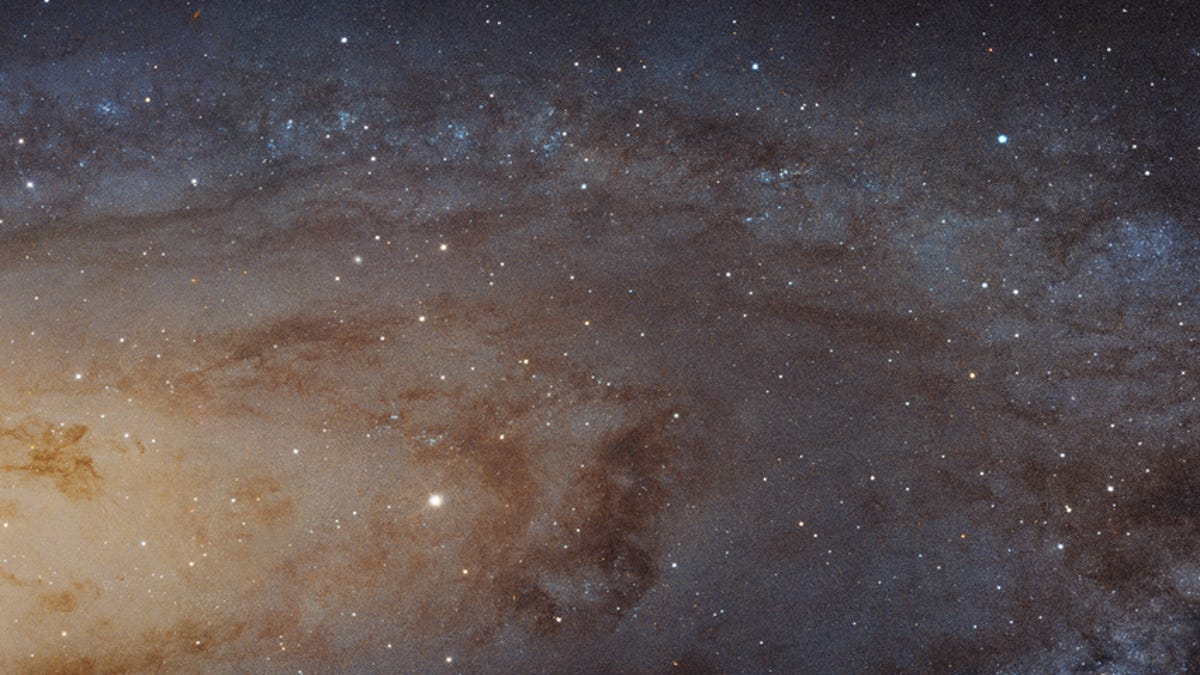Andromeda Vs. Milky Way - What will really happen when the galaxies collide?
Sure it's still billion of years away, but here are some of the top theories from experts

Click here to see GameSpot & EA's guide to Mass Effect Andromeda
At a distance of 2.5 million light years from the Milky Way, it's hard to believe that Andromeda is our closest neighbouring galaxy. But despite the huge distance between these two elliptical entities, the Andromeda galaxy is hurtling towards our home galaxy at a speed of roughly 402,000 km per hour right now.
Of course that speed sounds mind-blowing to us here on Earth, but there's a lot of ground - or more accurately, space - to cover in between the two. This has led scientists to predict that the inevitable collision, which many are calling Milkomeda or Milkdromeda, won't happen for more than 4 billion years. So we've got plenty of time to prepare.
Dr. Karen Masters, a Reader of Astronomy and Astrophysics at the Institute of Cosmology and Gravitation, University of Portsmouth explained: "Andromeda and the Milky Way have been known to be approaching each other ever since radial velocities were first measured for galaxies. Andromeda is one of just a handful of blueshifted galaxies - most have redshifts, which indicates they are moving away from us."
But she revealed it's only recently that scientists have been able to accurately predict the collision is almost certainly going to happen - and not just a distant possibility. "What was uncertain was the transverse motion - i.e. would Andromeda actually miss us and move past the Milky Way? - but this has recently been measured and demonstrated that the collision will occur."
"When galaxies collide they distort each other, so both Andromeda and the Milky Way will stop looking like spirals and get rather messed up instead," Dr. Masters explained. "In fact, NASA has put together and illustration of this process, which shows us what it might look to us on Earth - if we were still around. Or you can take a look at this Hubble Space Telescope time sequence using real images of spiral galaxies merging together."
If all this talk of collisions sounds horrifying, don't worry. Experts believe that the celestial bodies in both galaxies are so far apart there'd be no chance of any one thing crashing into something else in the way we'd all probably picture.
"The gaps between stars are so large that no stars will collide," Dr. Masters told us. "But, some will get flung out into intergalactic space in giant 'tidal tails', while the rest will start orbiting the common centre of mass of the combined galaxy."
This means that as both galaxies collide together the supermassive black holes in the centre of each are likely to converge, moving a number of stars to different orbits - although this process in itself could take millions of years.
Scientists are still unsure about what fate holds for our solar system and the future of the Earth during the collision. One theory suggests that the solar system is likely to be swept out a little further from Milkdromeda's galactic core than its current distance. But others believe it may be ejected from the new galaxy entirely as both Andromeda and the Milky Way get closer to one another. Although they also predict neither is likely to have a big effect on the sun and the planets, they'll probably continue orbiting as normal.
It's worth remembering that all of this activity is more than 4 billion years away. Scientists have speculated that by that point the Earth will have become too warm for terrestrial life to inhabit it unless we've mastered planetary engineering by then.
So maybe our distant relatives will be watching the collision from a different galaxy entirely?
To explore the Andromeda Galaxy as told by EA's Mass Effect Andromeda, click here
Photos by NASA